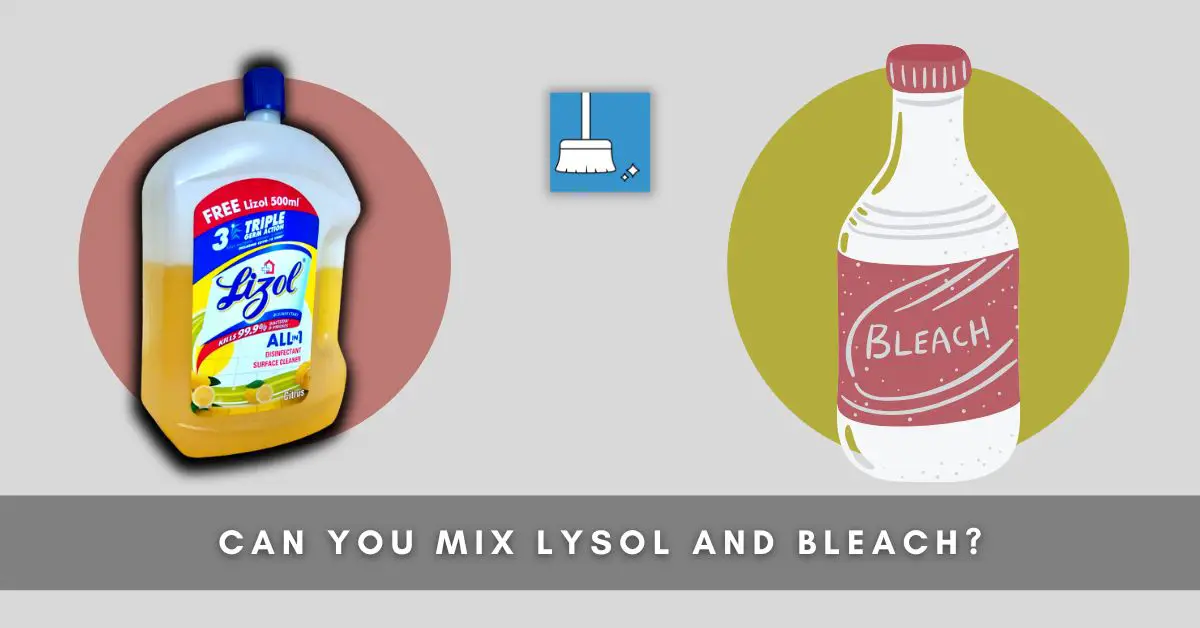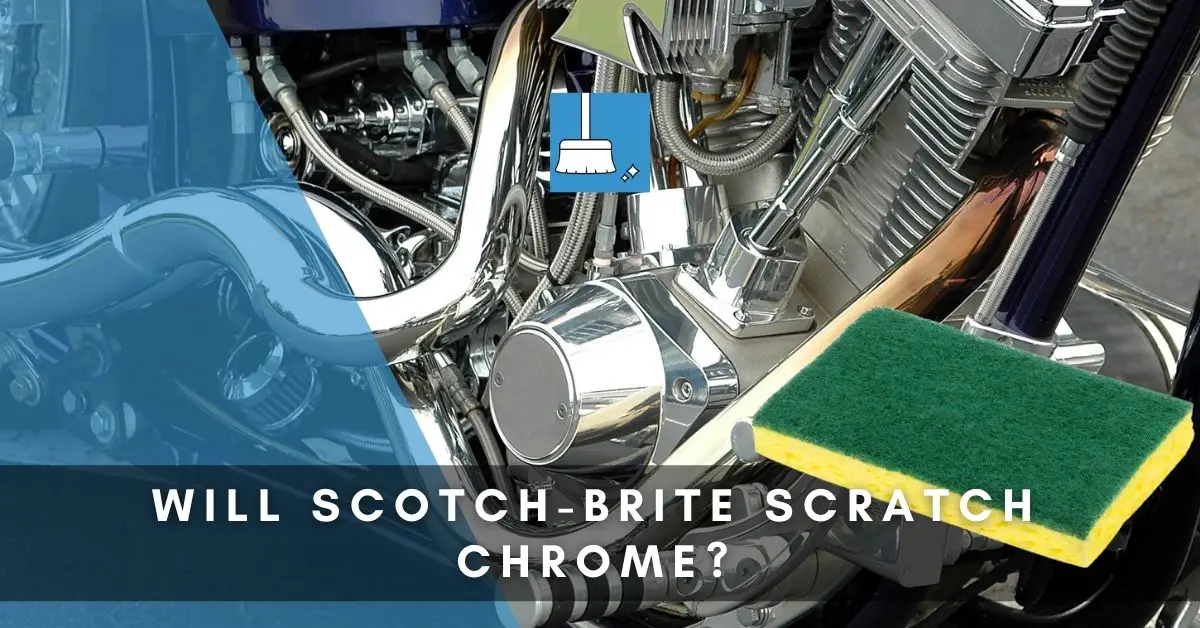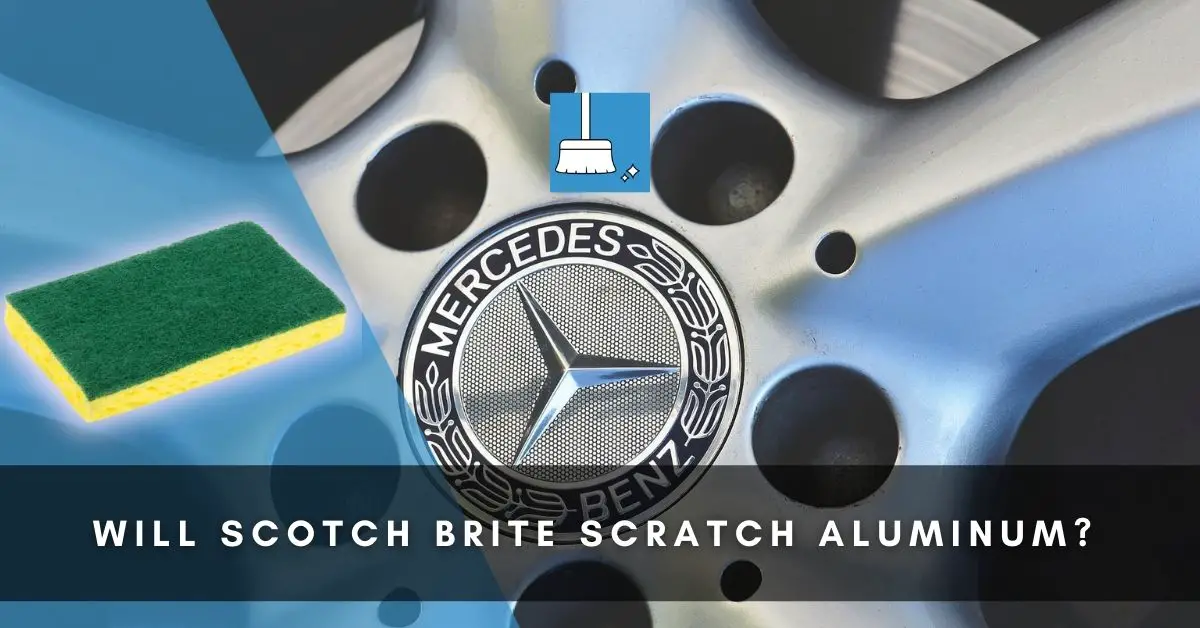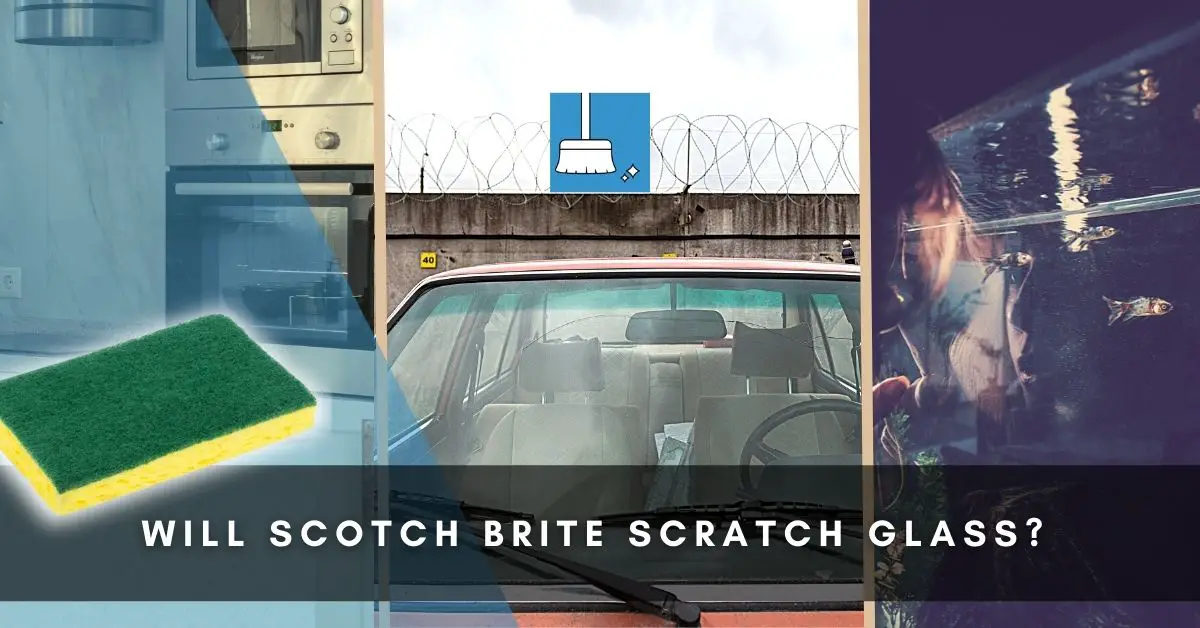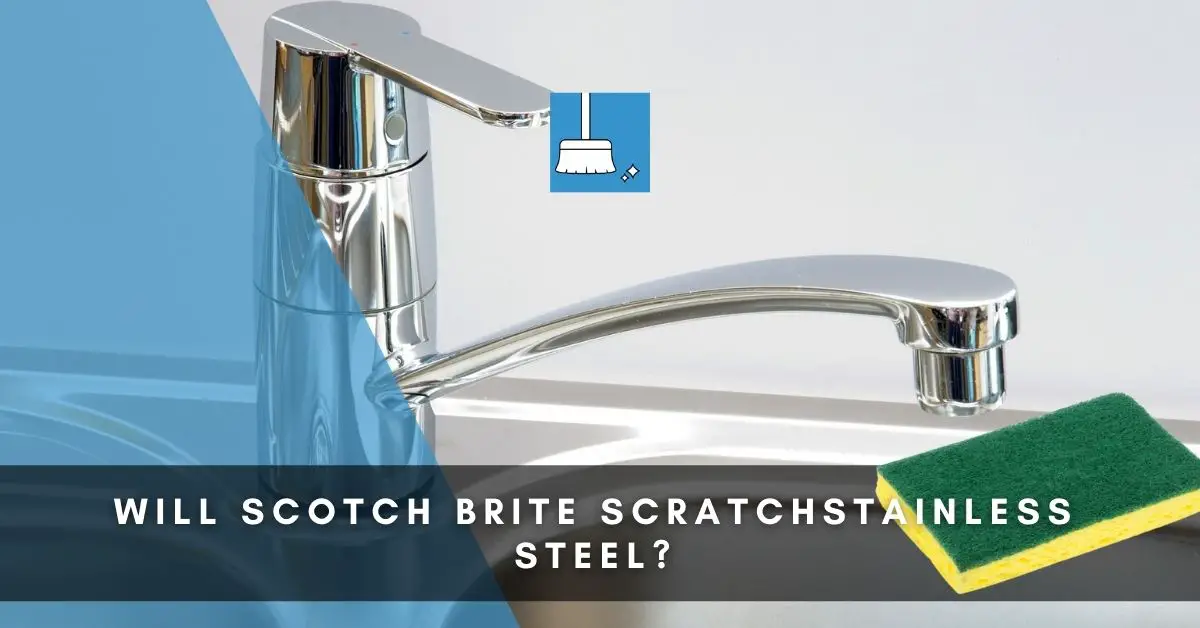Everyone loves a house that has been thoroughly cleaned and disinfected. Sometimes, you can get carried away and mix chemicals just to get the ‘extra’ touch for a thorough clean or to remove stubborn stains.
Other times, you can mix cleaners unintentionally. This will create more harm than good. Read on to find out more about which cleaning agents should not be mixed and the uses of Lysol products.
Can You Mix Lysol and Bleach?
Mixing bleach with any cleaner can be highly toxic. Lysol mixed with bleach forms the dreaded chlorine gas.
Commercial cleaning products do not contain bleach unless stated specifically. They should be used as directed, and not combined with bleach under any circumstance.
Chlorine gas is hazardous, and if inhaled in large amounts, can cause a variety of symptoms.
Different Lysol Cleaning Products & their Reaction with Bleach
Lysol is a well-known popular brand name owned by Reckitt. They make a variety of cleaning products under the Lysol umbrella. These products are designed to kill 99.9% of germs. Listed below are Lysol products and their uses:
Lysol® All-Purpose Cleaner
Uses: To remove grease and grime, soap scum, and dirt.
Surfaces and areas: To be used on hard, non-porous surfaces, in the kitchen and bathroom, and other areas in the house.
Designed to kill 99.9% of germs, including the COVID-19 virus when used on hard, non-porous surfaces.
This cleaner contains no bleach. It should not be mixed with bleach or any other cleaning product.
Lysol® Hydrogen Peroxide Multi-Purpose Cleaner
Uses: it is designed to clean, dissolve grease, and remove soap scum. To clean, spray the area and wipe with a clean cloth.
To remove soap scum, spray and leave for 5 minutes before wiping clean. To disinfect a surface, clean it, use the spray and leave it on for 10 minutes before rinsing it off.
It should be used on hard, non-porous surfaces and kills many viruses and bacteria such as salmonella, e-coli, certain strains of avian flu, rhinovirus, and rotavirus among others.
Lysol® Disinfectant Concentrate
Uses: it removes grease and grime and destroys odor-causing bacteria and viruses.
Surfaces and areas: it can be used in bathrooms, bathtubs, kitchen countertops, doorknobs, and the exterior of appliances.
As this is a concentrate, dilute 2 ½ tablespoons in 1 gallon of warm water. Dip the cloth or mop in the solution and wipe.
To disinfect, dilute 2 ½ tablespoons in a quart of water and wipe with a cloth or mop. Leave it on for 10 minutes before wiping the area again with water.
Lysol® Power Toilet Bowl Cleaner
This is specifically formulated to be used in toilets.
Uses: it removes stubborn stains and toilet bowl rings. The shape of the bottle lets you target the hard-to-reach areas.
It eliminates 99.9% of germs, including the rotavirus, HIV-1, and staph bacteria.
Lysol® Power Bathroom Cleaner
This product is designed to be used in bathroom and bathroom surfaces such as sinks, bathtubs, showers, chrome fittings, and ceramic tiles.
Uses: it removes limescale, soap scum, mold, and mildew stains. The products also prevent the recurrence of mold and mildew. It leaves a fresh-smelling scent behind and adds a shine to the surfaces.
Lysol® Hydrogen Peroxide Toilet Bowl Cleaner
This is another product specifically for use in the toilet bowl. It does not contain bleach.
Usage: flush the toilet, aim the toilet bowl cleaner under the rim and squirt out enough to clean the bowl thoroughly. Scrub the bowl, and flush after 5 minutes. This will sanitize the toilet bowl too.
To remove limescale and stains, squirt the cleaner in the bowl, let it remain for 10 minutes, scrub and then flush.
Always rinse the toilet brush in fresh bowl water after use.
Lysol® Mold and Mildew Remover
Lysol has a certain product that targets mold and milder.
Surfaces and areas: this can be used on bathroom surfaces, sinks, glazed ceramic tiles, and countertops. Do not use it on wood, fabric, non-porous surfaces, clothes, and carpets.
Usage: pre-clean the surface area, spray the product and leave for 5 minutes and let it air dry. Use regularly as needed.
Lysol® Laundry Sanitizer
This product is to eliminate the germs that laundry detergents leave behind. It does not contain bleach. It is gentle on most fabrics and works well with white and colored clothing. It also kills the Covid-19 virus if used as directed.
The Lysol Laundry Sanitizer is used on clothes, towels, bedding, delicates, and baby clothes.
Usage: to sanitize laundry, add it to the rinse cycle and run it for 16 minutes.
To disinfect clothes, soak them for 15 minutes in a solution of 1 gallon of cold water and 2 capfuls of Lysol laundry sanitizer. Then, rinse the clothes or run a machine wash cycle.
Note: These products should only be used as directed. None of these products should be mixed, or with items like bleach, vinegar, lemon juice, and baking soda. If these products are used where food comes into contact with surfaces such as kitchen counters, rinse those surfaces with water after cleaning and disinfecting.
What To Do If You Mix Lysol and Bleach Accidentally?
If these two products were mixed accidentally, take the following steps:
STEP 1: Open the windows and doors of the room in question.
STEP 2: All the items that were in contact with the two products need to be disposed of safely or wiped clean with water. Any cleaning items that were used with the mixture need to be thrown away immediately.
STEP 3: If the mixture was poured into the toilet bowl, flush it a few times.
STEP 4: Take a shower and put the clothes worn while mixing the two products for a wash. This is to avoid exposure to any droplets which you might have come into contact with.
Lysol® Bleach Multi-Purpose Cleaner
Multi-purpose cleaners are specially formulated to be used on most surfaces such as steel, laminate, and glass. They can clean and disinfect and be used for wiping and mopping.
This product should be used on hard, non-porous surfaces as per instructions. Always wear gloves when using these kinds of products.
The bleach in the Lysol multi-purpose cleaner destroys bacteria such as salmonella and staph, viruses, and fungi such as mold and mildew.
To remove mold and mildew, spray it on a pre-cleaned surface and then allow it to air dry. Repeat regularly or when mold appears.
To clean surfaces, spray on the surface and then wipe with a cleaning cloth or sponge.
To sanitize certain areas, spray it on and wipe the area after 30 seconds.
To disinfect, spray it on and leave for 5 minutes before wiping.
Always use as directed as it is not recommended for certain surfaces such as wood, copper, aluminum, and vinyl. It can be used on bathtubs and sinks, kitchen counters, tiles, door handles, and light switches.
Bleach vs Commercial Cleaning Products
While it is tempting to use just bleach instead of purchasing various cleaning products, there are important points to note:
1- Bleach cannot be used on all surfaces, such as wood, stainless steel, copper, marble, and granite.
2- If you use bleach in your laundry, over time it can weaken the fibers. Prolonged use of bleach can also cause skin irritation.
3- Bleach is a disinfectant and not a cleaner. Bleach cannot degrease or remove limescale.
4- If not diluted properly, bleach can be harmful as the fumes can cause shortness of breath, headaches, and irritation as well as chemical burns.
5- Bleach hurts the environment. It takes a long time to dissolve and break down.
There are safer alternatives that can be used instead of bleach. You can have 2-3 commercial cleaners and household items like vinegar, lemon juice, and baking soda to keep your house clean and safe. Always read the labels and do not mix any two items.
Toxic Consequences of Mixing Common Cleaning Products
You may mix certain items without realizing that the resulting product can be highly toxic. The following are examples of common household items which should never be mixed.
1- Bleach & vinegar: Mixing bleach and vinegar creates chlorine gas.
2- Bleach & ammonia: These two, when mixed, produce chloramine gas.
3- Bleach & lemon juice: A mix of these creates chlorine gas.
4- Bleach & cleaners: This creates toxic fumes which can be hazardous.
5- Baking soda & vinegar: If these two items are mixed, the result is not potent. However, if the solution is kept in a closed container, it can explode. The solution is ineffective as the two items neutralize each other.
6- Cleaners: Mixing cleaners such as Lysol and Fabuloso can create toxic fumes and hazardous chemical reactions which can cause a variety of symptoms.
7- Drain cleaners: Different drain cleaners should never be mixed as they can explode if combined.
8- Lysol & Vinegar: This can create chlorine gas and also result in a weak solution.
Health Hazards of Mixing Common Cleaning Products
Combining the above-mentioned items releases certain gases and fumes, which if inhaled in large quantities can have severe consequences.
1- Symptoms of chlorine gas exposure – irritation in the eyes and nose, coughing or wheezing, nausea, vomiting, and chemical burns.
2- Symptoms of chloramine gas exposure – irritation in the eyes and nose, coughing, and congestion.
Mixing cleaning products can irritate the eyes, nose, and skin. Chemical burns are also common.
The severity of symptoms depends on the length and quantity of exposure. If exposure is intense, it can cause death in some cases.
Open doors and windows immediately if there is a chance that any two products have been mixed in error. If you have been exposed to any toxic fumes, go to the doctor immediately.
What To Do If You Accidentally Mix Bleach & Toilet Bowl Cleaner
Mistakes happen sometimes. You can accidentally put bleach and then the toilet bowl cleaner while cleaning your toilet and bathroom areas.
If you mix the two, close the lid of the toilet and flush.
Open the windows to let out any fumes. Flush the toilet a few times so the mixture does not sit on the bottom or stay in the pipes as it can cause damage. Let the windows remain open for a few hours.
Afterward, wear gloves and wipe down the affected areas with water.
If you feel nauseous, have irritation in the eyes or nose or if you vomit, go to the doctor immediately, and ensure nobody in the household goes to the affected area.
Which Cleaners Can Be Mixed with Bleach?
Bleach is a disinfectant useful in killing fungi such as mold and mildew, bacteria, and viruses, thus making it effective on its own and does not need to be mixed with any other cleaner or chemicals. Mixing bleach with any kind of cleaner will form certain fumes which in large quantities are potent.
Bleach cannot be mixed even with household items like vinegar and baking soda.
Water and laundry detergent are the only 2 items that can be mixed with bleach in reasonable amounts.
For cleaning and disinfecting, follow the instructions for diluting bleach with water. If the instructions are not indicated, you can mix 1/3 cup bleach in 1 gallon of water.
Read the instructions for the laundry detergent if you need to mix it with bleach. Laundry detergent is formulated to mix with bleach. This helps to whiten and brighten clothes and remove stains. Never pour bleach directly on clothes. Dilute it in water or put it in the dispenser in the washing machine.
Besides water and laundry detergent, no other cleaner can be mixed with bleach.
Final Thoughts!
Household items such as vinegar, baking soda, and lemon are good enough to clean most surfaces. However, regular usage of vinegar on certain surfaces can be corrosive. Commercial cleaning products should be used as directed and on surfaces that are specified on the instruction label.
Never mix different cleaning products (such as Lysol) with bleach. Even expired Lysol products should not be disposed of with bleach as this can cause the same reaction.
If exposed, open the windows and if you present any symptoms, go to the doctor. Keep bleach and other cleaning items out of reach of children and pets.

